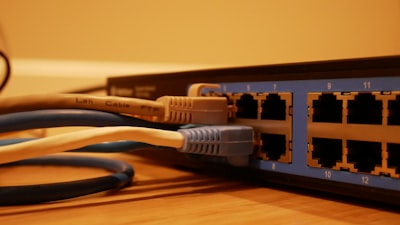Throughout my life, I’ve had numerous email providers, starting with Hotmail almost 10 years ago. Recently, I’ve been focusing more on ways I can secure my emails. No, I may not have anything to hide, but that doesn’t matter!
Originally I thought the best way to keep things secure, and out of the hands of any government body was to host it all myself. This came with a number of problems, mostly due to my lack of experience running anything like this, which lead to problems with my spam filter blocking legitimate emails, and any emails I did send ending up in their spam folder.
After searching around for a while, I stumbled on ProtonMail (now known as Proton), who claimed to be the most secure email host ever. One of their founders did a TED talk, which sold me on the platform.
ProtonMail uses a combination of open-source technologies, a closed-access platform, and swiss data centers to protect emails better than anyone else! The only way you can access your emails is by using their custom apps for Android, iOS, and web. Whilst this is annoying, and means it isn’t accessible through protocols such as IMAP and POP3, which would considerably lower the security.
Back in April, I signed up to ProtonMail’s Plus tier, and switched all my domains to use their servers as an email provider. The set up process itself was incredibly simple, it walks you through every DNS record you needed to create, so all I had to do was copy-paste!
#Experience
ProtonMail as a system is fantastic! So far it’s had 0 downtime, never missed a single email, and none of my emails have been caught by other peoples spam filters.
#The Problems
I knew ProtonMail was missing some features, but when I committed, I didn’t think I’d need them. It’s funny just how little you think you need a feature, until you don’t have the option.
Now, three months on, I’m starting to get a little annoyed at ProtonMail, mainly at their lack of features. Yes the security is great, really great, but the fact I have to open a website and login every time I want to check my emails is a little tiring, and their mobile app, whilst fully functional and capable of the basics, has some bugs and glitches out sometimes.
Another problem is the lack of basic features. Whilst the client does have labels, and ’+ aliases’, both of which are great features for those with email OCD, The platform is missing out on some other key features, like:
- Custom message filter (currently in beta)
- IMAP / POP3 support, for external clients
- Custom PGP certificates
- Quick folder filters (see only unread…)
- Reading your emails offline (even through the mobile app)
These problems are taken for granted in most other mail platform, but because ProtonMail is built from the ground up, and is still a reasonably new product, it’s missing a lot of these key features.
Update: All the above features have either been implemented, or are being actively worked on.


